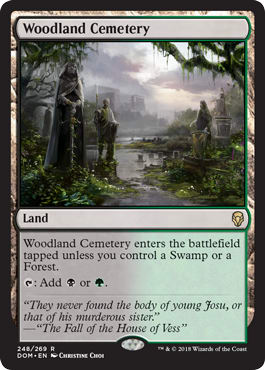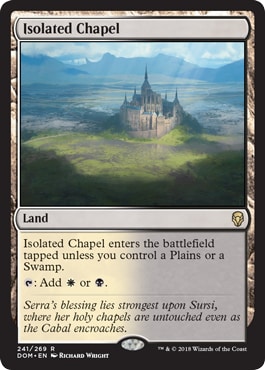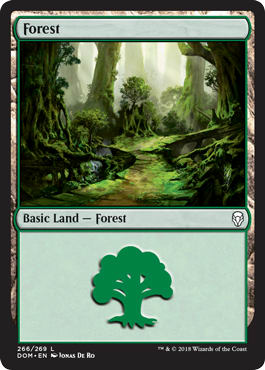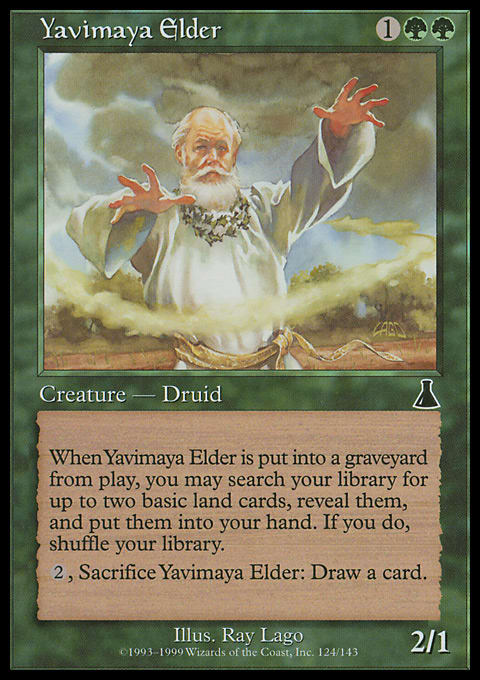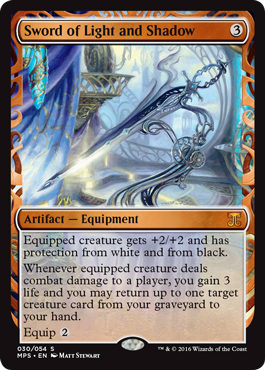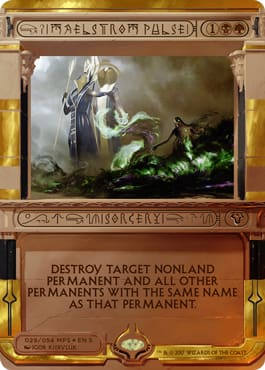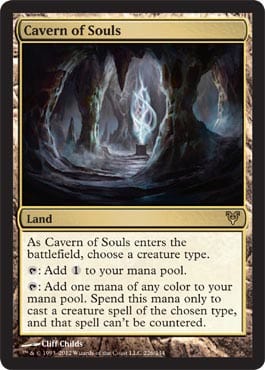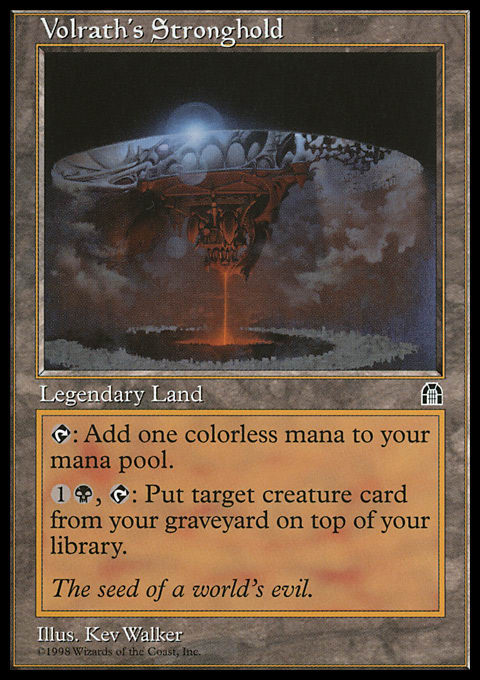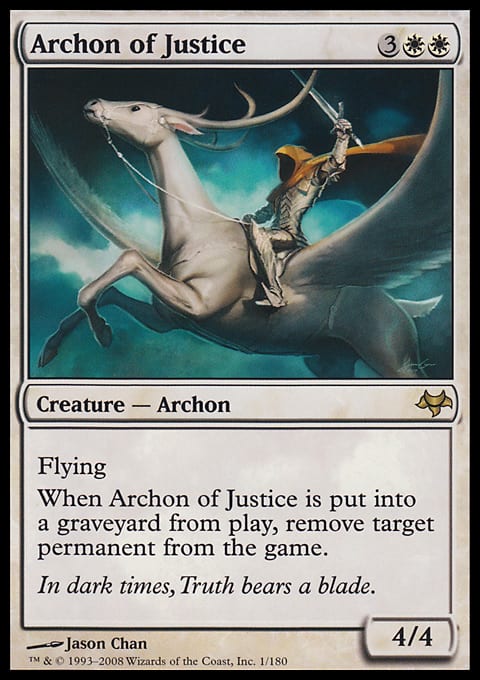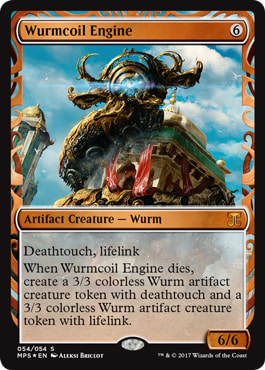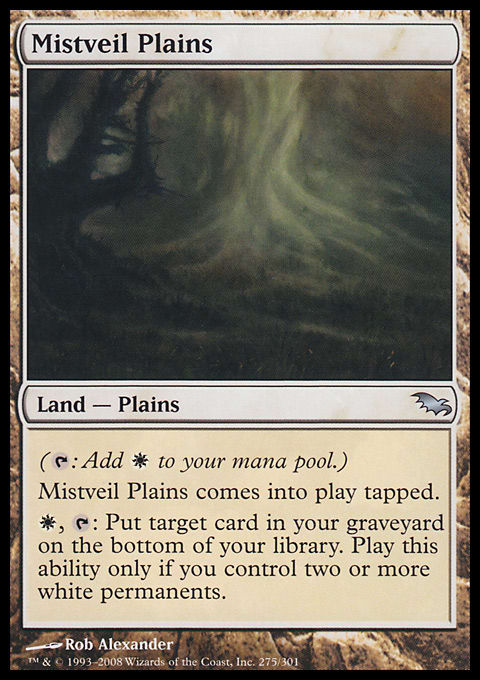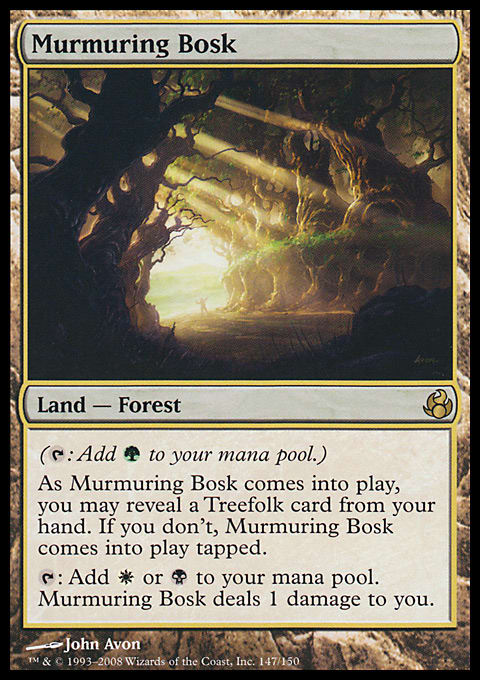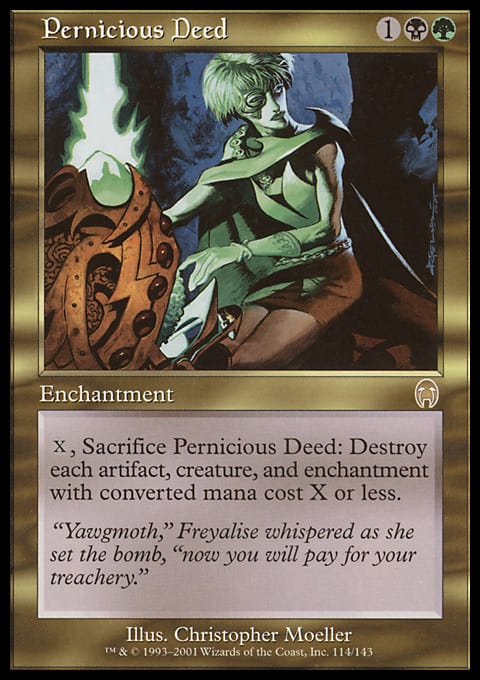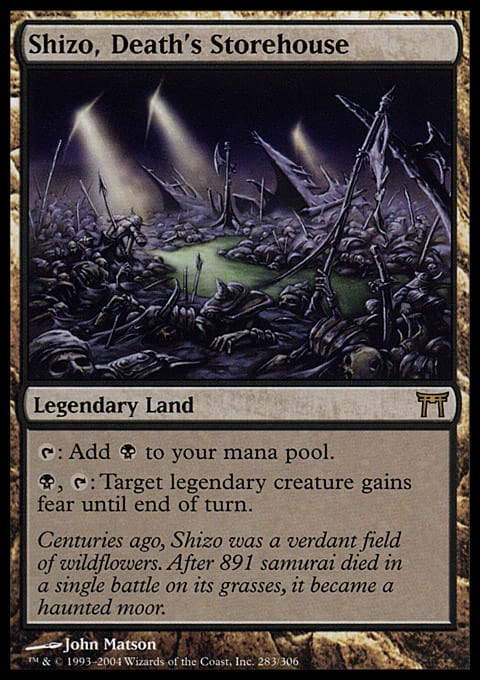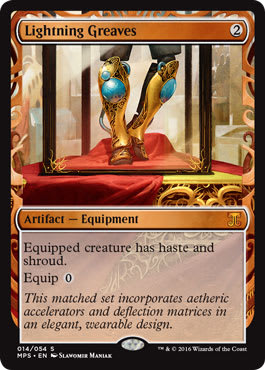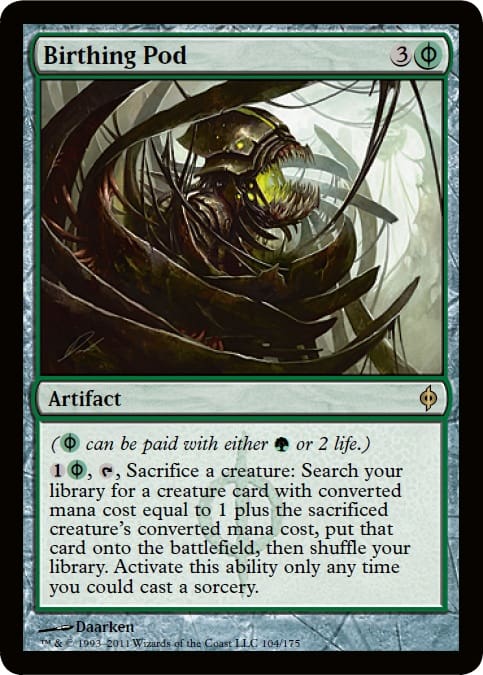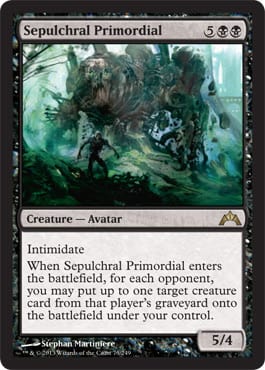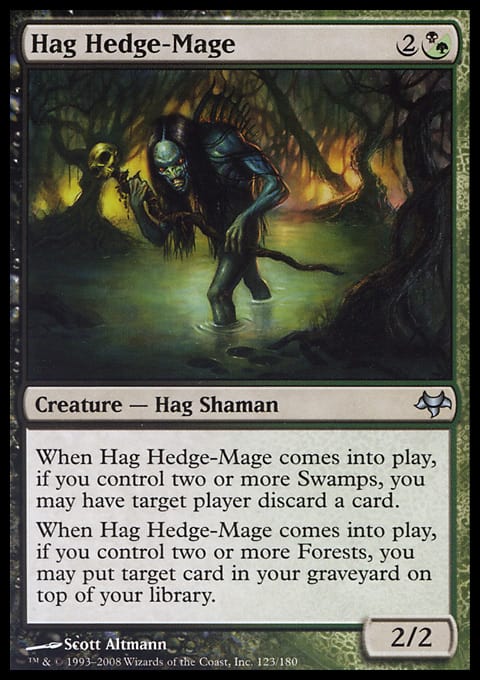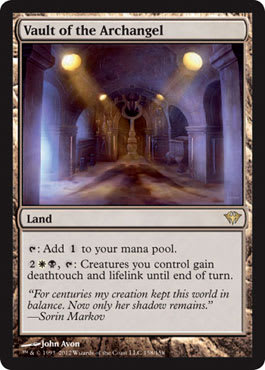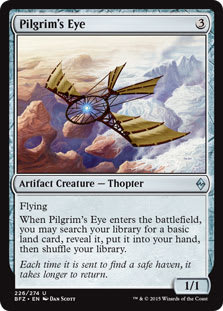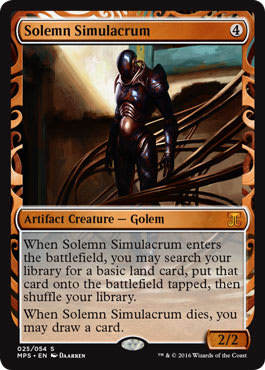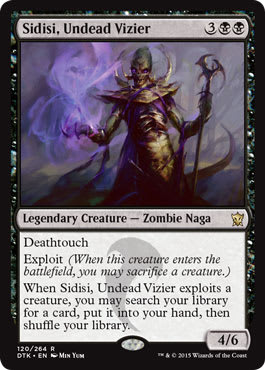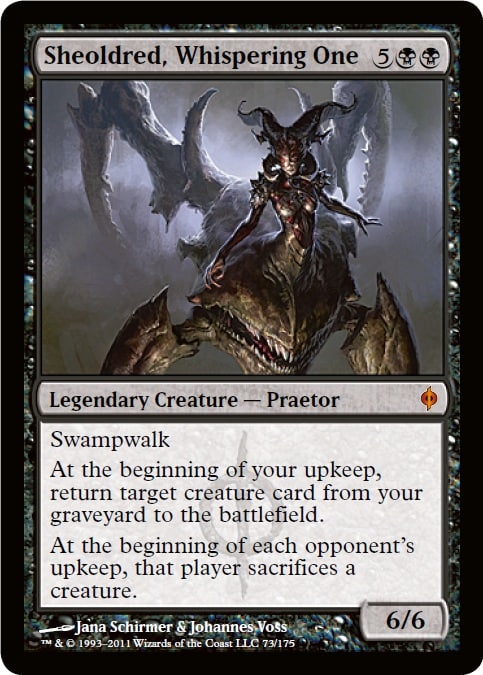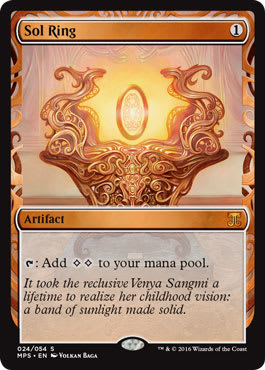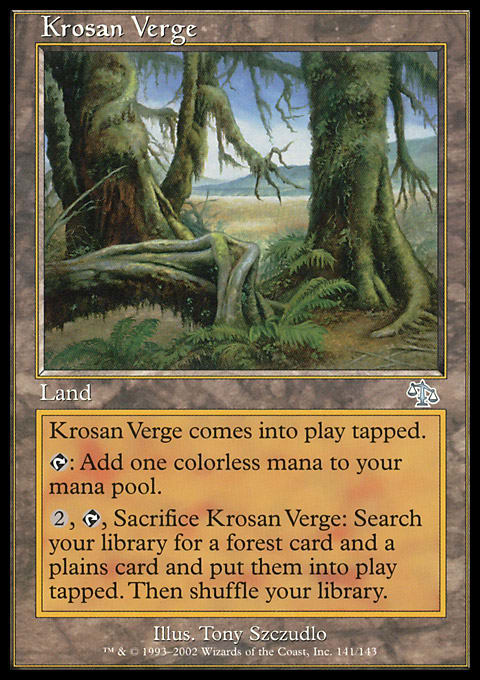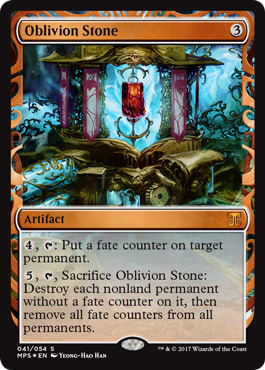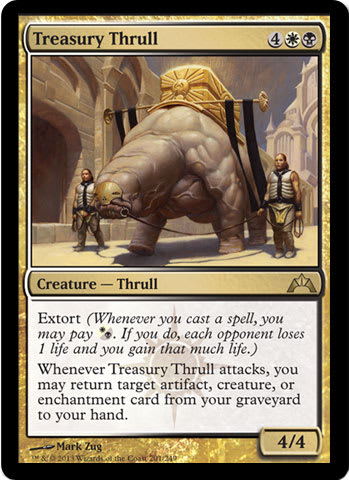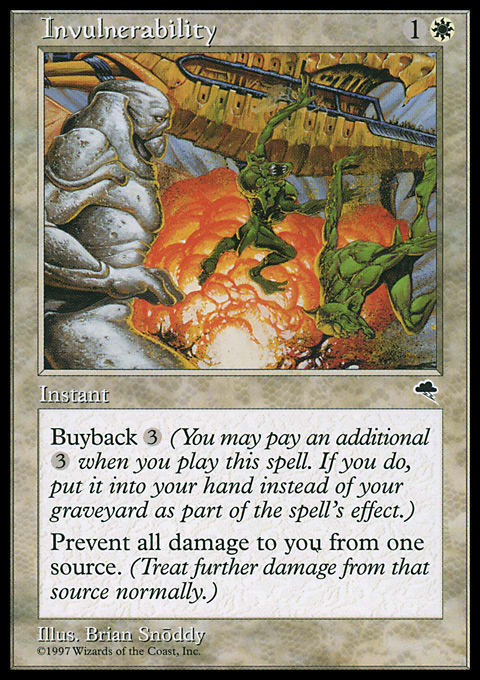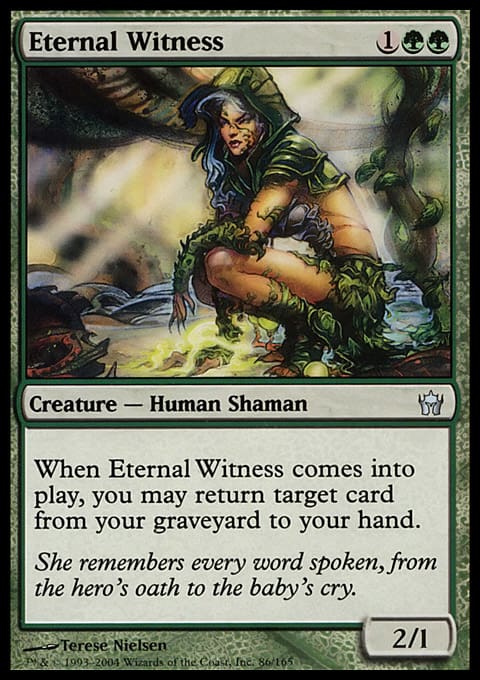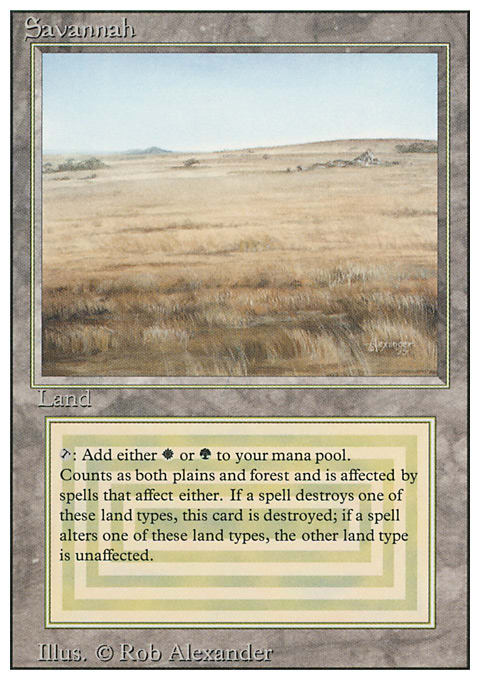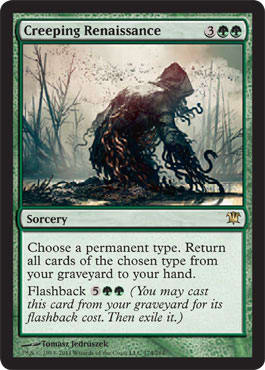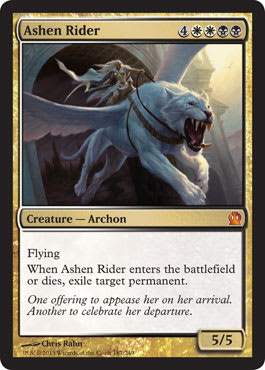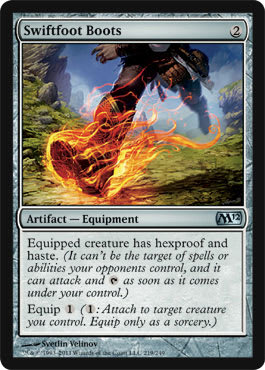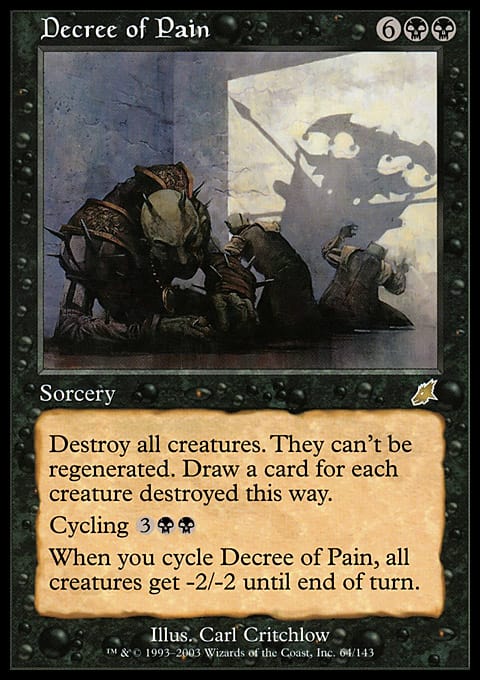Magic is all about decisions; building decks, making plays, picking targets. But the most important decision you will make in every game is the decision to mulligan. Knowing when and how to mulligan is a potentially decisive skill even in multiplayer, but it rarely gets talked about.
Worse, when someone does talk about it, it sounds like high school math homework. The best part of being a grownup is that you don’t have to do math anymore, but that doesn’t mean you can't mulligan well. Today I’m going to talk about a different approach to mulligans — a narrative approach.
Part of successful mulliganing is about knowing what your deck is capable of. Then you can look at your opening hand and evaluate how the game is going to play out. A good hand tells a story of how you march to victory, or at least march to a strong mid-game position; Narrative mulliganing involves building a hand that tells this story. I’m going to look at some concrete examples of narrative mulligan decisions using one of my best decks: Teneb, the Harvester.
House Rules
House rules are still an important part of a casual format like Commander, and I should point out that my playgroup uses a modified version of the old Partial Paris/Gis mulligan rules. We allow everyone to put X cards on the bottom and draw X cards for the first mulligan (so you keep seven cards), and thereafter we can put back X cards and take X-1 cards as much as we like. I believe that a lot of groups still use some form of this Paris mulligan, so I’ll use that in the following examples.
Know Your Deck
Teneb is a reanimation/mid-range/control deck. It doesn’t ramp ferociously or win out of nowhere, just continuously builds value. In addition to a decklist, I put my list up on TappedOut.net here, so you can actually take him for a spin, see how he plays, and what his strengths and weaknesses are. Then we can look at a bunch of mulligan decisions and see what I’m trying to do.
Teneb, the Harvester ? Commander | Daryl Bockett
- Commander (1)
- 1 Teneb, the Harvester
- Creatures (24)
- 1 Angel of Despair
- 1 Archon of Justice
- 1 Ashen Rider
- 1 Brutalizer Exarch
- 1 Burnished Hart
- 1 Dauntless Escort
- 1 Eternal Witness
- 1 Genesis
- 1 Hag Hedge-Mage
- 1 Karador, Ghost Chieftain
- 1 Karmic Guide
- 1 Kokusho, the Evening Star
- 1 Loyal Retainers
- 1 Nezumi Graverobber
- 1 Pilgrim's Eye
- 1 Reveillark
- 1 Sepulchral Primordial
- 1 Sheoldred, Whispering One
- 1 Sidisi, Undead Vizier
- 1 Slum Reaper
- 1 Solemn Simulacrum
- 1 Treasury Thrull
- 1 Wurmcoil Engine
- 1 Yavimaya Elder
- Instants (12)
- 1 Comeuppance
- 1 Corpse Dance
- 1 Fracturing Gust
- 1 Invulnerability
- 1 Krosan Grip
- 1 Momentous Fall
- 1 Mortify
- 1 Putrefy
- 1 Return to Dust
- 1 Swords to Plowshares
- 1 Tribute to Hunger
- 1 Wing Shards
- Sorceries (0)
- Enchantments (5)
- 1 Aura Shards
- 1 Dictate of Erebos
- 1 Gift of Immortality
- 1 Greater Good
- 1 Pernicious Deed
- Artifacts (10)
- 1 Birthing Pod
- 1 Claws of Gix
- 1 Darksteel Ingot
- 1 Lightning Greaves
- 1 Nevinyrral's Disk
- 1 Oblivion Stone
- 1 Sensei's Divining Top
- 1 Sol Ring
- 1 Swiftfoot Boots
- 1 Sword of Light and Shadow
- Lands (37)
- 2 Forest
- 2 Plains
- 3 Swamp
- 1 Bayou
- 1 Bojuka Bog
- 1 Cavern of Souls
- 1 Command Tower
- 1 Godless Shrine
- 1 Golgari Rot Farm
- 1 Grim Backwoods
- 1 High Market
- 1 Isolated Chapel
- 1 Krosan Verge
- 1 Marsh Flats
- 1 Miren, the Moaning Well
- 1 Mistveil Plains
- 1 Murmuring Bosk
- 1 Opal Palace
- 1 Orzhov Basilica
- 1 Overgrown Tomb
- 1 Reflecting Pool
- 1 Savannah
- 1 Scrubland
- 1 Selesnya Sanctuary
- 1 Shizo, Death's Storehouse
- 1 Stirring Wildwood
- 1 Sunpetal Grove
- 1 Temple Garden
- 1 Vault of the Archangel
- 1 Verdant Catacombs
- 1 Volrath's Stronghold
- 1 Windswept Heath
- 1 Woodland Cemetery
Right First Time
I ran through twenty or thirty different starting hands, using the more generous Seoul mulligan rules, and there were only a couple of hands where I would keep all seven cards. Here is an example of a ‘perfect’ hand.
Hand #1:
It’s got the mana and the early plays, both active and reactive, so it’s definitely a keeper. But it also tells the story of the game where I dropped Yavimaya Elder, cycled into a bunch of mana, played another creature, equipped it with the Sword, regrew the Elder and never missed a land drop. Then, I had the removal on hand for when everyone tried to balance against me. The hand tells the story, and the story guides my strategy during the game.
Hand #2:
With this hand, you know exactly what you're doing on turns three, four, and five. The Archon and Wurmcoil tell a story of how I deterred most attackers while swinging with Teneb for the win.
Hand #3:
Once again, Yavimaya Elder is on the scene, which shows just how valuable he is. I’ll either drop it on turn three or play an early Deed and sweep the table. Beacon then lets me claim the best creature in the game, and Karador lets me replay my own stuff — even if it’s only the Elder, that’s a great position to be in.
In all three cases, my opening hand guides me as the game unfolds. It also gives me a better idea of which opponents I need to focus on. If I’m relying on a Sword of Light and Shadow, maybe I should hit the opponent with the most artifact removal (or leave them alone — it depends on how hard I can hit them!). If my early game plan involves recurring Archon of Justice then I should target the White mage before they can draw a Rest in Peace, and so on.
Second Chances
When you can do a selective mulligan without card disadvantage, as we allow in Tokyo and Seoul, it is usually correct to do so. Even if you just ‘cycle’ away your most expensive card, you gain virtual card advantage from getting a card you're more likely to play, and/or dig a little deeper to the cards you want more.
Here are three sample hands where I needed to mulligan once to feel comfortable with my opening hand:
Hand #1:
Two lands is a killer, and while I like all of those cards, the strongest synergy is between Birthing Pod and Archon of Justice. As useful as a turn two Greaves can be, making land drops on turn three and four is better. I mulligan away three cards (Greaves, Primordial, and Kokusho) and draw into:
That’s a keeper: three lands, a Top to smooth out my draws, and a creature on turn three that I can Pod on turn four. From there, this hand tells the story of the game where I rode a Birthing Pod to victory.
Of course, no plan survives contact with the enemy, and there are no guarantees in the wild and crazy world of Commander. Someone could blow up my Pod right away, but there is still a strong advantage to having a specific plan at the beginning of the game.
Hand #2:
This is the classic good-stuff mulligan dilemma. I have everything I need if I hit the third land and cast Pilgrim followed by Simulacrum, but if I stall on mana then I’m defenseless. Getting to Sidisi on turn five is the most important thing, so I mulligan away Wurmcoil Engine and Sheoldred and draw Bojuka Bog and Sol Ring.
This hand tells the story of the time I went crazy with ramp and took over the game. I’ll probably use Sidisi to get a Corpse Dance and reuse my three critters until someone exiles them.
Hand #3:
No matter how good your mana is, some cards are much less effective in the early- to mid-game, even if you can cast them — Treasury Thrull and Invulnerability in this case — and so they really just tell the story of the time I lost because I was holding two dead cards in my hand for much of the game. So I got rid of those and drew two forests instead.
That is much better — it could tell the story of the time I got mana-flooded, but it is more likely to be the story of the Nezumi Graverobber that dominated the early game until my opponents recovered, at which point I wiped the board and dropped Teneb with a full grip of cards.
Third Time’s the Charm
As I’ve explained, my house rules allow us to keep seven cards on our first mulligan, but the second mulligan takes us to six cards, and I can’t stress this enough: you should never be afraid of going down to six cards. Here are some cases where the certainty of six good cards is much better than the uncertainty of seven mediocre ones.
Hand #1:
Nothing costs more than three, but with one land and no clear plan it has to go. Obviously I need to keep the land, and I choose to keep the Ingot, for mana and color fixing. Also, because this deck cares a lot about creatures, I keep the Witness. Everything else goes, and my four new cards are:
This gives me three lands, only one of which is colored, but it means a third-turn Ingot and probably a fourth-turn Witness (for a fetchland) or Rout (assuming I get another land). It could be worse, but it doesn’t give me a plan beyond surviving four turns. Given that Rout and Invulnerability are ideally long-game cards, I keep the lands and ship the spells, trading two for one and getting:
Now we’re talking! The Graverobber is a wonderful cheap creature, and flipping him into Nighteyes the Desecrator can just win games.1
These six cards tell the story of the game where I recurred Nezumi Graverobber with Volrath's Stronghold until I flipped him and took over the game. If I draw other action along the way then I can cast it, but whenever I lose tempo I can put the Graverobber on top of my library and start again.
Hand #2:
More uncastable goodstuff. Creeping Renaissance and Treasury Thrull can both be useful for getting back just one card, but you put them in your deck hoping to get more out of them; in other words, they are cards you want to draw in the late game, not your opening hand. Similarly, Ashen Rider is a wonderful reanimation target, but if you draw him without the setup then he’s just real expensive. Mortify is a great card, but not as good as a Wrath, or a third land. Verdict: keep two lands and one sweeper, and ship the rest.
What I get is nice, but not decisive: Swamp, Vault of the Archangel, Archon of Justice, and Brutalizer Exarch. That leaves me with four lands, but only one White source, while two of my three spells have ![]()
![]() in the cost. This creates a dilemma: Is it worth holding onto Archon of Justice for five turns hoping to draw another White mana, or put that and Brutalizer Exarch back, and get another card in return? That would leave me with Wrath of God as an insurance policy, but only six cards. The answer depends on the game, not the hand. If you’re facing down a superfast deck, then you have to do everything you can to get that Wrath off on turn four; that’s the story of them coming out, guns blazing, you blowing up their world and rebuilding faster than they can.
in the cost. This creates a dilemma: Is it worth holding onto Archon of Justice for five turns hoping to draw another White mana, or put that and Brutalizer Exarch back, and get another card in return? That would leave me with Wrath of God as an insurance policy, but only six cards. The answer depends on the game, not the hand. If you’re facing down a superfast deck, then you have to do everything you can to get that Wrath off on turn four; that’s the story of them coming out, guns blazing, you blowing up their world and rebuilding faster than they can.
On the other hand, if you feel like you can take your time in the early game, then Archon and Exarch tell a story of you holding off the table and then calling in reinforcements . . . ideally turn five Archon, turn six Exarch, tutoring for Sheoldred, then sweeping the table and dropping one of your reanimation engines.
The most important thing to remember is this: you can't be afraid to take the extra mulligan and go down to six cards if the situation calls for it. A good six beats a bad seven any day of the week.
For the record, the next card would've been Burnished Hart, so that looks like a pretty good hand.
Try, Try Again
When I was playing Standard in FNM, I had a mantra: “double mulligan always wins.” Too often I’d been afraid to go down to five cards, and I lost a lot of games with crappy six-card hands. Things turned around for me2 when I learned to trust the double mulligan. This is an example of a hand where five is greater than six:
Hand #1:
A turn one Sol Ring followed by a turn two Pilgrim's Eye is a great start, but if your only land comes into play tapped, we’re actually talking about a turn two Sol Ring and a turn three Pilgrim's Eye. At that point, Sol Ring isn't even ramping you, it’s just letting you play cards on curve, so you probably need a mulligan. Swiftfoot Boots is always good, but it is a force multiplier, not a business card, while Crime // Punishment is mana-dependent. I’d rather keep the Putrefy as insurance and the Sword for the chance to reanimate the Pilgrim's Eye and start thinning my deck, so I ship Crime and Boots and get . . . Dictate of Erebos and Treasury Thrull. No land, and I’ve just made my curve worse, so I have to mulligan down to six. The problem is, when your mulligan gives you diminishing returns (e.g. putting back two cards and only getting one) then you have to be a little more aggressive. I recommend putting back at least three cards to get back two, otherwise you can't dig yourself out of a hole.
That’s why I put back Dictate of Erebos, Treasury Thrull and (I’ve got a bad feeling about this) Putrefy, digging for a land. In exchange, I get Swords to Plowshares and Decree of Pain. This really hurts, because Decree is just going to sit dead in my hand for ten turns or more. By that stage I might be dead.
With six cards in hand I have one land and two castable spells. If Sol Ring survives, I will then have the mana to cast Pilgrim's Eye and the Sword, but no creatures to recur, and no conceivable way of casting Decree. In this situation, holding onto six cards is a bigger gamble than going down to five, so I put back three (Sword, Swords, and Decree) and draw High Market and Greater Good. High Market doesn’t help me with my colored mana dilemma, but it brings Sol Ring out on turn one and Pilgrim's Eye ahead of schedule. 5 mana on turn three is nice, even if I don’t have anything to cast with it yet.
In terms of a story, this might just be the time where you mulliganed to five and struggled to claw your way back. But if you can get to 6 mana and play Teneb with Greater Good, then you have a chance. In any card game, it all comes down to maximizing your chances to win
Conclusion
Mulligans are a big part of the game, and no matter what style of mulligan your group plays with you need to understand how to take advantage of it. A hand of six or even five usable cards is better than seven cards that you can't use. Like The Ferrett always said, you should mulligan on the assumption that your deck hates you.
I hope you found the narrative style useful for figuring out what hands to keep and what hands to send back. You don’t need to be able to calculate the odds of drawing your sixth land in your head, but you do need a plan, and mulliganing until your hand tells a good story can really help.
1 I took Seedborn Muse out of this deck because it was too easy to combo off with Nighteyes. When half your wins come from the same two-card combo, it’s time to make a change, I reckon.
2 Relatively speaking; obviously the Pro Tour still eludes me, but playing better is playing better, no matter where you start from.













